Stranded, Survival Without Supplies!
How to Survive if Stranded in the Woods Without Supplies
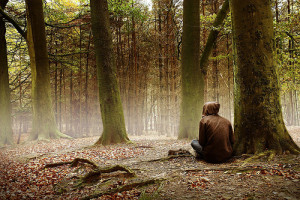 One of the most dangerous situations for anyone is stranded in the woods without any supplies. Perhaps you intended to take a short walk and a storm rolled in and you can’t make it back home, your car broke down in the middle of nowhere, or maybe SHTF on that one day that you were at work without your EDC or Get Home Bag. Regardless of the circumstances that got you there, you find yourself forced to spend the night.
One of the most dangerous situations for anyone is stranded in the woods without any supplies. Perhaps you intended to take a short walk and a storm rolled in and you can’t make it back home, your car broke down in the middle of nowhere, or maybe SHTF on that one day that you were at work without your EDC or Get Home Bag. Regardless of the circumstances that got you there, you find yourself forced to spend the night.
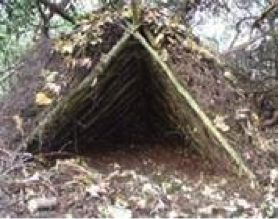 Remember the law of 3’s if you are caught out in the weather without supplies. If you are stranded in the woods in an area where the weather is extreme (very hot or very wet or cold), you need to make building a temporary shelter your first priority. Most people can only survive 3 hours in extreme weather without shelter. And, although not having something to drink will be uncomfortable to say the least, most people can go about 3 days without water and about 3 weeks without food before trouble sets in.
Remember the law of 3’s if you are caught out in the weather without supplies. If you are stranded in the woods in an area where the weather is extreme (very hot or very wet or cold), you need to make building a temporary shelter your first priority. Most people can only survive 3 hours in extreme weather without shelter. And, although not having something to drink will be uncomfortable to say the least, most people can go about 3 days without water and about 3 weeks without food before trouble sets in.
So here’s what you need to focus on:
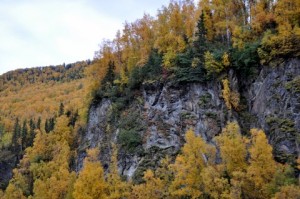 If you are stranded in the woods but you are certain of your location, then it may be just a matter of waiting for weather to clear so you can hike out. If you have somehow gotten lost in the woods, try to determine your location before the sun goes down. Climb to the top of a hill or other elevated piece of ground to look for landmarks.
If you are stranded in the woods but you are certain of your location, then it may be just a matter of waiting for weather to clear so you can hike out. If you have somehow gotten lost in the woods, try to determine your location before the sun goes down. Climb to the top of a hill or other elevated piece of ground to look for landmarks.
Make note of the direction of any major landmarks or roads you can see in the distance so that you can travel that way once morning arrives. Pay attention to the direction the sun travels to help you get your bearing and figure out which way to travel.
Build a Temporary Shelter
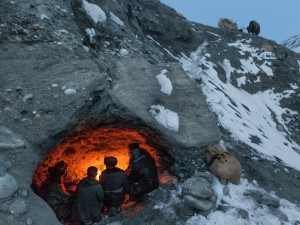 The quickest and easiest way to make a temporary shelter is to scout out a ledge, cave, or fallen tree that you can use for part of the shelter. A tree trunk with at least one lower branch or a dense stand of bushes will work also. This cuts down on the amount of work you need to do in order to have a secure shelter.
The quickest and easiest way to make a temporary shelter is to scout out a ledge, cave, or fallen tree that you can use for part of the shelter. A tree trunk with at least one lower branch or a dense stand of bushes will work also. This cuts down on the amount of work you need to do in order to have a secure shelter.
Collect as much brush, pine needles, vines, and branches of varying sizes as you can find. You will use the branches and vines to create a wall up against the ledge, fallen tree, or lower tree branch. Use the brush to fill in the wall to keep out the wind. Layer the pine needles on the ground inside to protect you from the cold ground when you sleep.
Find Fresh Water
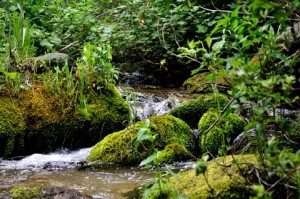 The next order of business after building your temporary shelter is to locate fresh water. Scout nearby for a creek or stream. Moving water is easier to convert to drinkable water than stagnant water such as in a pond. Collect water from a creek or stream as far upstream as you dare to travel without getting lost or too far from camp. It’s best to filter it using charcoal pieces from your fire and boil it before drinking.
The next order of business after building your temporary shelter is to locate fresh water. Scout nearby for a creek or stream. Moving water is easier to convert to drinkable water than stagnant water such as in a pond. Collect water from a creek or stream as far upstream as you dare to travel without getting lost or too far from camp. It’s best to filter it using charcoal pieces from your fire and boil it before drinking.
You will need to collect a fair amount of pebbles, fine sand, and some charcoal pieces from your fire. Tear 2 pieces of cloth from the bottom of your clothing. Layer pebbles some sand and then one piece of cloth and some charcoal into any kind of container. Add the second piece of cloth, more sand, and more pebbles. Pour the water through the top of the container and wait for it to drip from the bottom into a smaller container. It will take some time. You will then need to boil the water before drinking it.
Collect Materials and Start a Fire
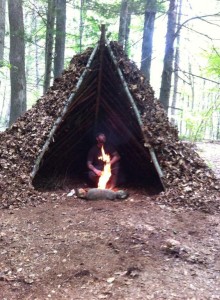 The ability to start and maintain a fire is a crucial skill to have if you are stranded overnight in the woods. Temperatures typically drop in the evening once the sun goes down and warmth will be important for preventing hypothermia. This is especially true if you accidentally got wet collecting your water or were caught out in a rain storm. Fire is also important for cooking and for warding off insects and predators.
The ability to start and maintain a fire is a crucial skill to have if you are stranded overnight in the woods. Temperatures typically drop in the evening once the sun goes down and warmth will be important for preventing hypothermia. This is especially true if you accidentally got wet collecting your water or were caught out in a rain storm. Fire is also important for cooking and for warding off insects and predators.
Build your fire near the opening of your lean-to shelter but not close enough to catch the roof on fire. If weather is extremely cold, you can heat rocks in the fire and then place them carefully inside around the edge of your shelter to provide extra warmth.
Find or Gather Food
 The average person can go up to 2-3 weeks without food before beginning to see serious symptoms. This is not true if you have a medical condition such as diabetes that requires you to eat at regular intervals. Once you have built a shelter, collected water, and have gathered enough material for your fire, spend some time searching for food.
The average person can go up to 2-3 weeks without food before beginning to see serious symptoms. This is not true if you have a medical condition such as diabetes that requires you to eat at regular intervals. Once you have built a shelter, collected water, and have gathered enough material for your fire, spend some time searching for food.
Collect any edible plants, berries, and weeds you find nearby. If you are able to identify a small game trail, set several basic animal traps along it using vines. You can use a rock to sharpen a stick so you can use it as a spear if the opportunity presents itself.
Collect any food that you find along the way, even if you aren’t sure you will need it before morning. Keep in mind that some bugs and insects are edible as well. If you are able to find a small game trail, set several traps along it.
The more skills you know and practice around building a shelter, finding and filtering water, starting and maintaining a fire, and how to find edible food, the better you will be able to survive. Supplies are great and always nice if you have them with you, but the smartest prepper knows how to survive off the land. To do this effectively when your life is in peril, you must learn and practice in advance.
Are you prepared?
Join us in the chat room for a LIVE show every night. See the LIVE show schedule HERE!
fire Food Shelter Stranded Stranded Survival Without Supplies Supplies survival Water

